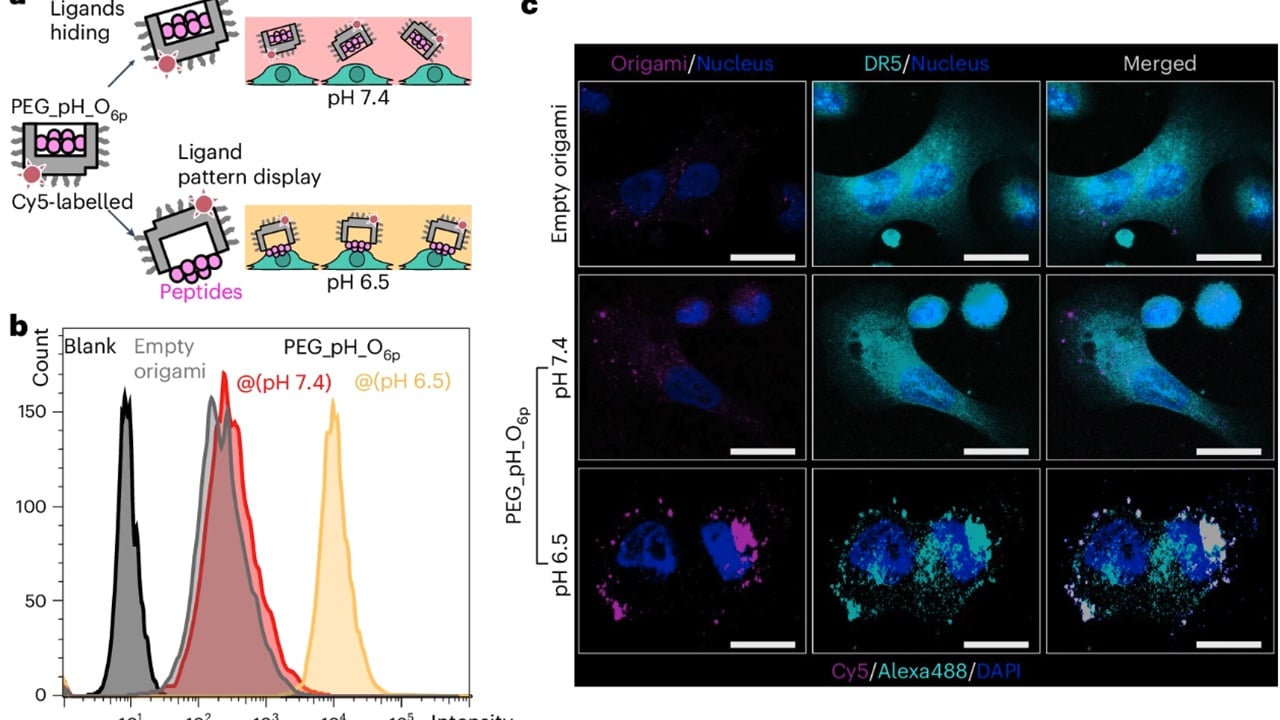
DOI: 10.1038/s41565-024-01676-4
Cancer Killing Nanobots
This July, researchers at Karolinska Institutet in Sweden published a study detailing their development of nanorobots that can selectively kill cancer cells in mice, resulting in a 70% reduction in tumor size. These nanorobots activate their lethal mechanism only in the tumor-specific environment, greatly improving the precision of cancer treatments.
Building on their previous work with cell death triggers, researchers at Karolinska Institutet have developed a new weapon: a hexagonal structure made of six peptides (amino acid chains). Professor Björn Högberg, who led the study, explains, “If you were to administer it as a drug, it would indiscriminately start killing cells in the body, which would not be good. To get around this problem, we have hidden the weapon inside a nanostructure built from DNA.”
For years, Professor Björn Högberg’s team has been pioneering a technique called DNA origami, where DNA strands are folded into specific shapes. Now, they’ve harnessed this technique to create a microscopic “kill switch” that only activates in the right environment.
Tumors have a lower pH, meaning they’re more acidic than healthy tissue. The researchers cleverly hid the peptide weapon within the DNA origami structure. This ensures it stays inactive at a normal pH of 7.4. But when injected near a tumor, the acidic environment (around pH 6.5) triggers the DNA origami to release the weapon, specifically targeting and killing cancer cells.
The researchers tested this by Injecting the nanorobots into mice with breast cancer tumors. The results were very promising. Tumor growth was reduced by a significant 70% compared to mice receiving an inactive version.
However, the researchers at Karolinska Institutet acknowledge the need for further investigation. Lead researcher Yang Wang highlights two key areas: testing the nanorobots in more complex cancer models that better mimic human disease and evaluating potential side effects before human trials can begin.
This study brings promising news, especially for breast cancer, the second leading cause of cancer death in women. Nevertheless, further research is needed on safety and effectiveness before human trials. This targeted approach has the potential to revolutionize cancer treatment.


 Previous Story
Previous Story

 Latest articles
Latest articles 

Leave a Comment
Cancel